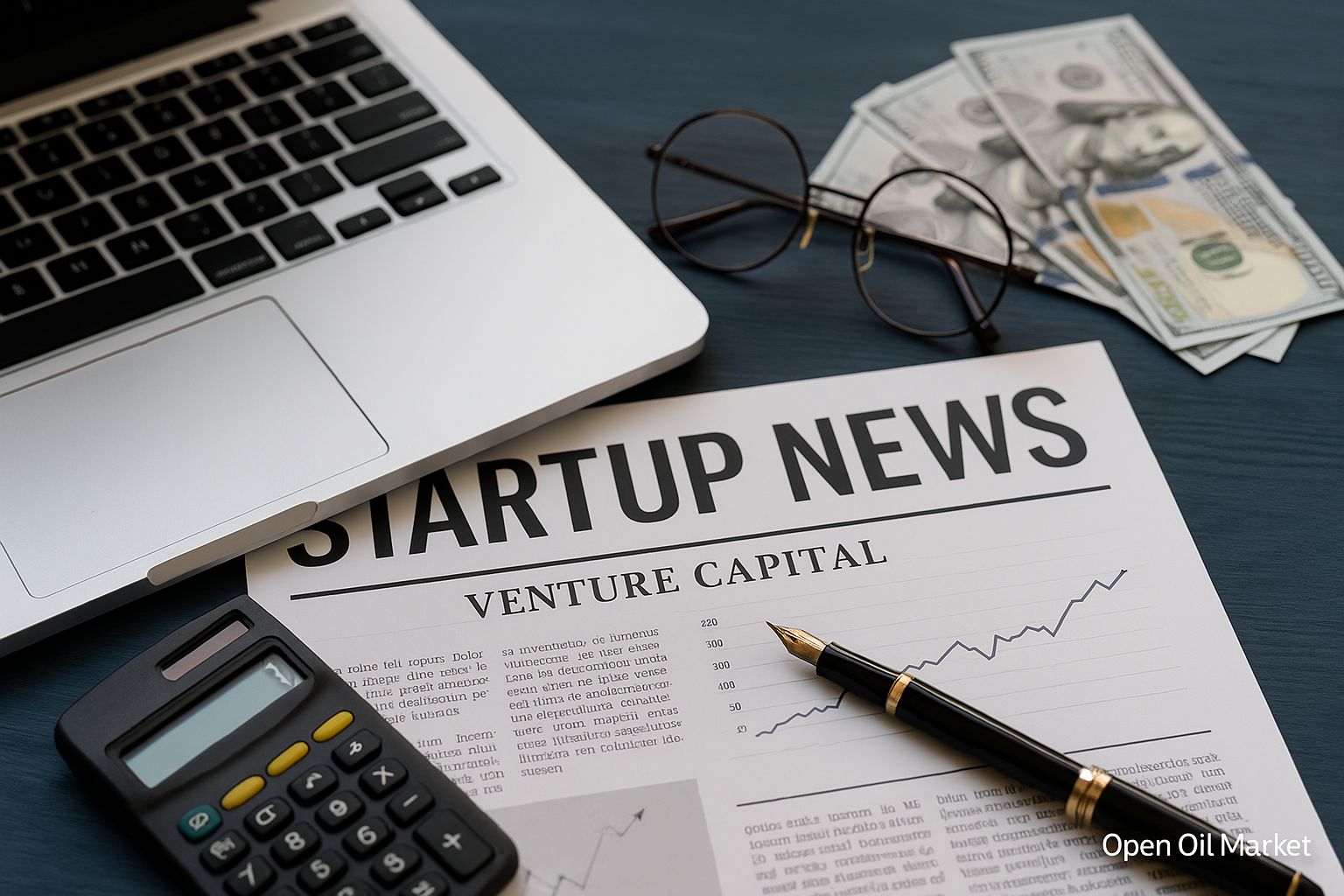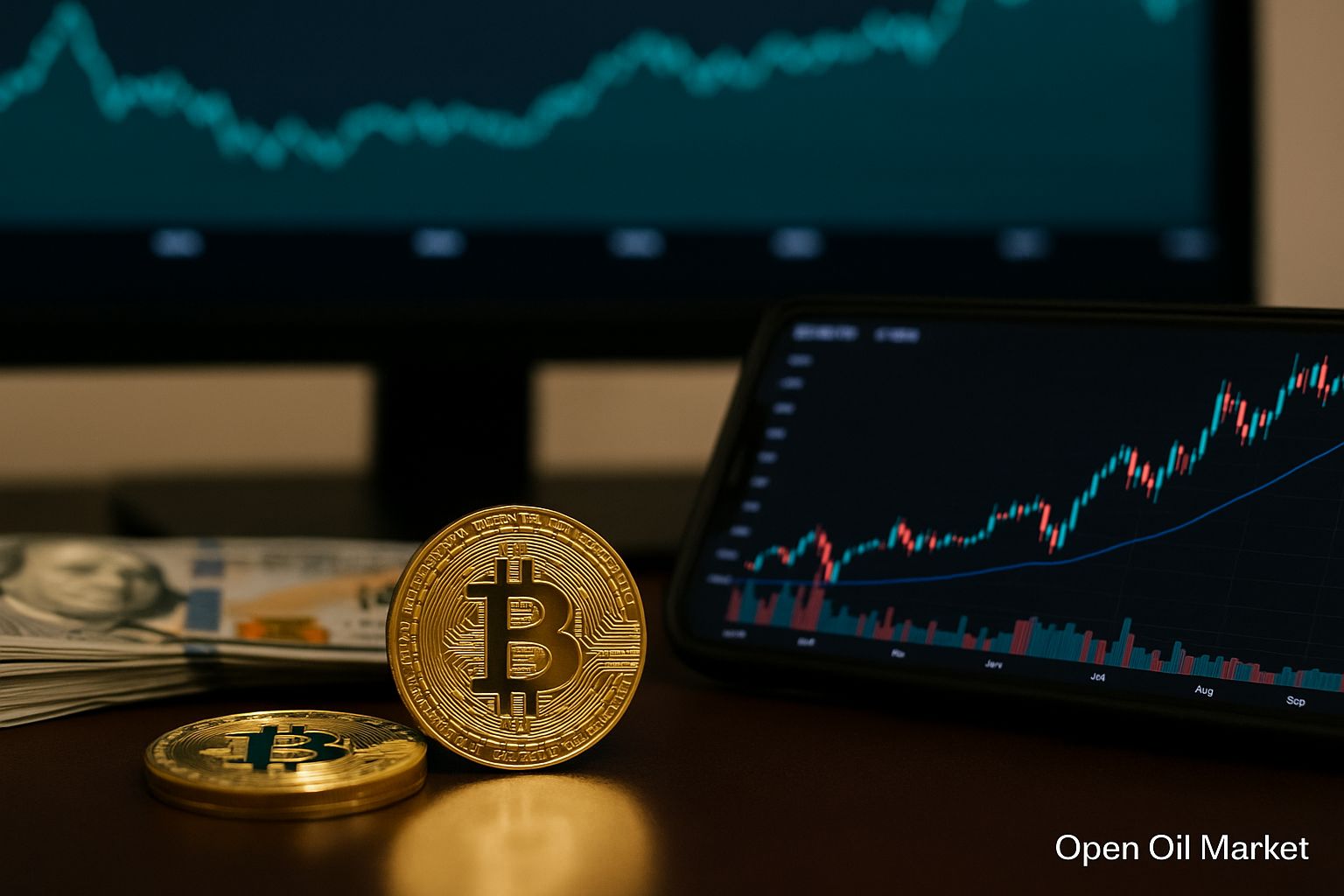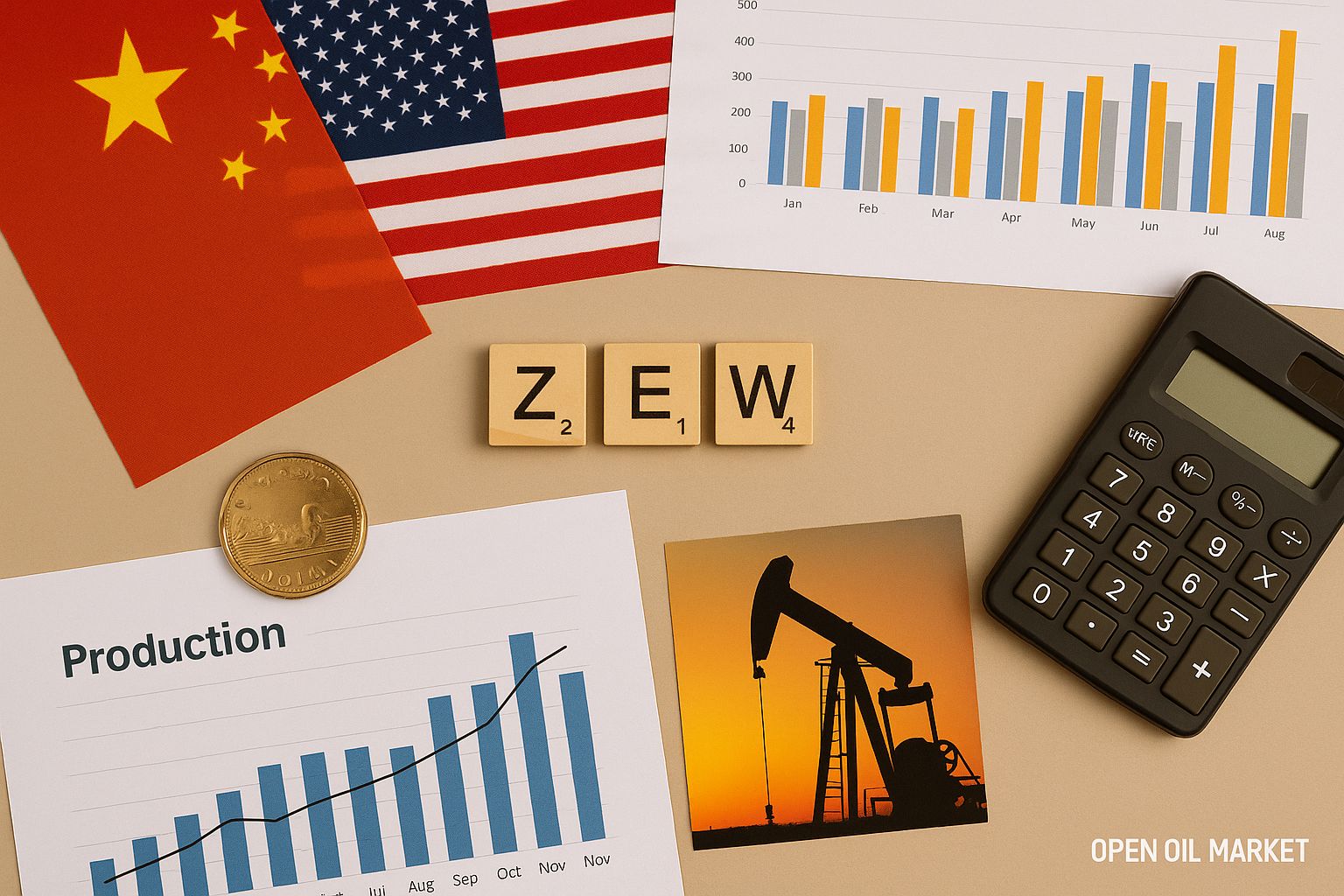Global Startups and Venture Capital News as of 16 September 2025: Mega Rounds in AI, Revived IPO Activity, New Funds, and Key Deals Across Industries for Professional Investors.
By mid-September 2025, the global venture capital market is steadily recovering after several years of decline. Investors across various regions have ramped up funding for technology companies at all stages of development – from early seed investments to preparations for IPOs. In the first six months of 2025, startups in North America raised approximately $145 billion, approximately 43% more than the previous year, marking a record high since 2021. Amid improving macroeconomic conditions and increased interest in new technologies, confidence in the venture market is strengthening: deals are growing in size and encompass a broad range of sectors, from artificial intelligence and fintech to biotechnology and defence. However, caution prevails as funding predominantly goes to a limited number of the most promising projects to avoid overheating in specific niches.
The venture boom is being observed across all regions. The United States continues to lead, accounting for around two-thirds of the global investment volume (especially dominating in the AI sector). In the Middle East, funding volumes have doubled over the year, driven by multibillion-dollar tech projects in the Gulf countries. Europe is experiencing structural shifts: for the first time in a decade, Germany has surpassed the UK in total venture deal volume, although Europe's share of global VC has slightly declined. India and Southeast Asia retain their investment boom, fuelled by foreign funds, while activity in China remains restrained due to internal restrictions. The startup scenes in Africa and Latin America are also being revitalised, attracting increasing capital and creating new growth points beyond traditional tech hubs. Meanwhile, Russian and CIS startups are striving to develop in parallel with the global market: despite external limitations, new funds and support programmes are being launched in the region.
Below are the key trends and events in the venture market as of 16 September 2025:
- Return of mega funds and large investors. Major venture players are forming record-sized funds and ramping up investments, saturating the market with capital and rekindling risk appetite.
- Record funding rounds and a new wave of 'unicorns.' Unusually large deals this year are driving startup valuations to unprecedented levels, particularly in the sectors of artificial intelligence and robotics.
- Revival of the IPO market. A series of successful public listings of technology companies indicates the opening of a 'window' for exits and the return of liquidity to the venture market.
- Wave of consolidation and M&A deals. Major mergers, acquisitions, and strategic investments are transforming the industry, creating new exit opportunities and accelerated growth for companies.
- Diversification of sector focus. Venture capitalists are investing not only in AI but also in fintech, green technologies, biotech, defence developments, and even crypto startups, broadening market horizons.
- Renaissance of the crypto industry. The rally in the digital asset market has reignited investor interest in blockchain projects, leading to new large funding rounds and even public offerings in the crypto sector.
- Surge in defence and space investments. Geopolitical factors are driving the influx of capital into defence tech and space projects, making these areas a new priority for venture funds.
- Local initiatives in Russia and the CIS. New funds and legislative proposals to support startups are being launched in the region, while local projects are starting to attract foreign capital, gradually integrating into global trends.
Return of Mega Funds: Big Money Back in the Market
The largest investment players are re-entering the venture arena, signalling a new surge in risk appetite. Japan's SoftBank, after a pause, is launching its third Vision Fund with around $40 billion to invest in advanced sectors (with a focus on artificial intelligence and robotics). Sovereign funds from the Gulf countries have also become more active, injecting petrodollars into technological initiatives and state mega-projects, creating their own centres of technology in the Middle East. Simultaneously, numerous new venture funds are being formed worldwide, attracting significant institutional capital for investments in high-tech spheres.
- Veritas Capital Fund IX – $14.4 billion. An American fund focused on technology and defence industries has closed its new fund at a record amount, demonstrating a high level of trust from major institutional investors.
- Great Hill Partners IX – $7 billion. One of the largest growth funds targeting tech companies has attracted significant capital, substantially exceeding its initial target size at the close of the new fund.
Notably, the venture firm Andreessen Horowitz is also planning a mega fund of $20 billion, entirely dedicated to investments in AI companies – if successfully raised, this will become the largest fund in the firm’s history. The increased influx of capital from such 'mega funds' is leading to a sharp rise in the volume of uninvested capital ('dry powder') in the market. This intensifies competition for the best startups and maintains high valuations for promising companies. The very presence of large institutional funds reinforces confidence that the capital influx into the sector will continue.
Mega Rounds in AI and a New Wave of 'Unicorns'
The artificial intelligence sector and other advanced technologies remain the main drivers of the current venture boom, demonstrating record funding volumes. Investors are keen to secure positions among the leaders of the new technological cycle, directing substantial sums towards the most promising projects. In recent weeks, several record deals have confirmed this trend:
- OpenAI (USA) – $8.3 billion. The AI technology developer secured one of the largest rounds in history at a valuation of around $300 billion. In partnership with Microsoft, the company is spinning off a business unit and preparing it for an IPO.
- Mistral AI (France) – €1.7 billion. The generative AI startup received record funding in Europe, raising its valuation to €11.7 billion. The leading investor was the Dutch corporation ASML, highlighting Europe’s ambitions in AI infrastructure.
- PsiQuantum (USA) – $1 billion. The quantum startup attracted the largest investment in its segment at a valuation of approximately $7 billion, confirming investors' readiness to fund technologies beyond classical artificial intelligence.
New directions capable of attracting huge rounds are also emerging. For example, Figure AI (USA), which develops humanoid robots, is reportedly in talks for a round of about $1.5 billion, with a potential valuation of around $40 billion – an unprecedented level for a robotics startup. Such mega rounds are creating a generation of new 'unicorns' and accelerating the emergence of future technology leaders. Despite warnings about potential market overheating, investor appetite for advanced projects remains high. It is noteworthy that not only applied AI products are being funded but also the infrastructure for them – specialised chips, cloud platforms, and data storage solutions necessary for scaling the AI ecosystem.
IPO Market Revives: The Window for Exits is Open
After the downturn of 2022–2023, the IPO market is once again showing signs of life. Successful public listings of several technology companies have indicated that investors are ready to purchase shares of rapidly growing startups at high valuations. The new wave of stock market debuts is bolstering venture funds' confidence in the opportunity for profitable exits.
- Chime. The American fintech unicorn (neobank) went public on Nasdaq in June; its stock price skyrocketed by 30% on the first trading day, confirming the high demand from investors for promising fintech companies.
- Klarna. The Swedish fintech giant debuted on the New York Stock Exchange, becoming one of the first European 'unicorns' to list in the US after a long hiatus. Shares were sold above the initial range and rose by more than 25% in the first hours of trading.
- Via. The American public transport technology developer raised approximately $493 million in its IPO on the NYSE, resulting in a valuation of around $3.5 billion. This debut showcased the market's readiness to invest in new segments of transport services.
The success of these listings signals the return of liquidity to the venture market. Following the first 'early birds,' other large startups are preparing to go public – from the American payment service Stripe (reportedly already filed a confidential IPO application) to highly valued AI companies like Databricks. The revival of IPO activity is critically important for the entire ecosystem: successful exits allow venture funds to realise profits and redirect freed-up capital into new projects, fueling the next cycle of growth.
Wave of Mergers and Acquisitions (M&A)
High valuations of startups and fierce competition for markets are driving the industry toward a new wave of consolidation. Major tech corporations are once again ready to spend billions on strategic acquisitions to bolster their positions and gain access to cutting-edge developments. A number of high-profile M&A deals in recent months confirm this trend:
- Google → Wiz – ~$32 billion. Alphabet acquired the Israeli cloud cybersecurity startup to strengthen its position in data protection and cloud services.
- SoftBank → Ampere – ~$6.5 billion. The Japanese holding purchased American server chip developer Ampere Computing, aiming to lead in the segment of chips for cloud and corporate data centers.
The activation of acquisition deals is changing the balance of power in the industry. Mature startups are either merging with one another or becoming targets for corporations. For venture investors, this opens up opportunities for long-awaited exits through the sale of portfolio companies to strategic players. Simultaneously, consolidation allows for the removal of excess players from the market and focuses resources on the most promising directions.
Diversification: Fintech, Biotech, and Green Projects
Venture investments in 2025 are no longer solely concentrated on AI – capital is actively flowing into other sectors as well. Following last year's downturn, fintech is regaining momentum: large fintech startups are attracting significant sums and renewing partnerships with banks. Concurrently, interest in climate and environmental projects is increasing – from renewable energy and energy storage systems to electric vehicles and technologies to reduce carbon footprints. Appetite for biotech is gradually returning: the emergence of new drugs and digital medical services is once again attracting capital as company valuations in the sector recover.
Recent examples of big deals outside the AI sphere confirm the breadth of the venture market:
- Kriya Therapeutics – $320 million. The American biotech startup specialising in gene therapy raised $320 million in a Series D round.
- Odyssey Therapeutics – $213 million. The biopharmaceutical company developing new medicines for serious diseases secured $213 million in a Series D round.
- Nitricity – $50 million. The Californian eco-tech startup received $50 million to develop an innovative technology for zero-emission fertiliser production.
The expansion of sector focus is making the startup ecosystem more resilient, reducing the risk of overheating in specific niches. Investors are deliberately seeking new growth points beyond the extremely popular AI, fostering the emergence of promising companies in a variety of fields.
Renaissance of the Crypto Industry
The digital asset market is experiencing a new boom in the latter half of 2025, reviving interest in venture capital for crypto startups. Bitcoin has already surpassed the historical milestone of $120,000, hitting an absolute record, and the prices of leading altcoins are rising rapidly following suit. Just a year ago, the blockchain sector was grappling with a crisis of trust and intense regulatory pressure; however, the current rally has fundamentally shifted investor sentiment.
Major funds that previously paused investments in crypto projects are re-entering this market. Significant funding rounds are being recorded, and some players are even going public. For example:
- Circle. The fintech company in the digital currency space successfully conducted an IPO, becoming one of the first major 'crypto-friendly' firms on the stock market.
- Gemini. The cryptocurrency exchange raised $50 million from Nasdaq Ventures just before its own public offering.
- BlackRock. The investment giant launched an exchange-traded fund (ETF) linked to Bitcoin, signalling institutional recognition of crypto assets.
All these events demonstrate that the blockchain industry is once again being perceived by investors as a promising growth area.
Defence Technologies and Space at the Forefront
The geopolitical tensions of recent years have led to an unprecedented surge in investments in the defence and aerospace sectors. Funding for defence tech startups has increased dramatically: large rounds such as the ~$2.5 billion raised by American maker of autonomous systems Anduril showcase venture capital's readiness to finance security-related projects. Investors (and in some cases, governments) are actively supporting the development of drones, cybersecurity, military AI systems, as well as new space programmes and satellite platforms.
The defence and space sectors are rapidly becoming a new priority for venture funds. In the US, several 'unicorns' have emerged in the aerospace technologies sector, while European defence startups have received a substantial influx of capital amid changing geopolitical circumstances. For instance, California-based manufacturer of standardised satellite platforms Apex raised $200 million in a Series D round to accelerate the mass production of spacecraft in response to rising demand. Overall, venture investments in 'hard' industries promise not only commercial rewards but also strategic advantages, making them attractive even to relatively conservative investors.
Russia and the CIS: Local Trends Amidst the Global Market
Despite external limitations, the startup scene in Russia and neighbouring countries is developing in parallel with global trends. In 2025, new sources of capital and initiatives to support the tech business have emerged in the region:
- New Funds. A private fund called Nova VC (approximately 10 billion rubles) has commenced operations in Russia, while in Tatarstan, a sectoral venture fund for the 'New Chemical Industry' (~5 billion rubles) has been established to finance regional innovation projects.
- Government Support. Authorities are discussing a separate law on venture investments. Among the declared goals is to stimulate innovation and increase R&D spending to 2% of GDP by 2030 (almost double the current level).
- International Success. Despite sanction barriers, teams from the CIS continue to secure funding abroad. For example, the machine learning service Vocal Image, founded by expatriates from Belarus and operating in Estonia, received ~$3.6 million from a French venture fund – proving that promising projects from the region can find support on the global stage.
Although the volume of venture investments in Russia and the CIS currently lags behind global leaders, all the necessary elements of the ecosystem are being formed: local funds, accelerators, government programmes, and international partnerships. This provides the foundation for the emergence of their own 'unicorns' and a deeper integration of regional startups into the global technological agenda.




